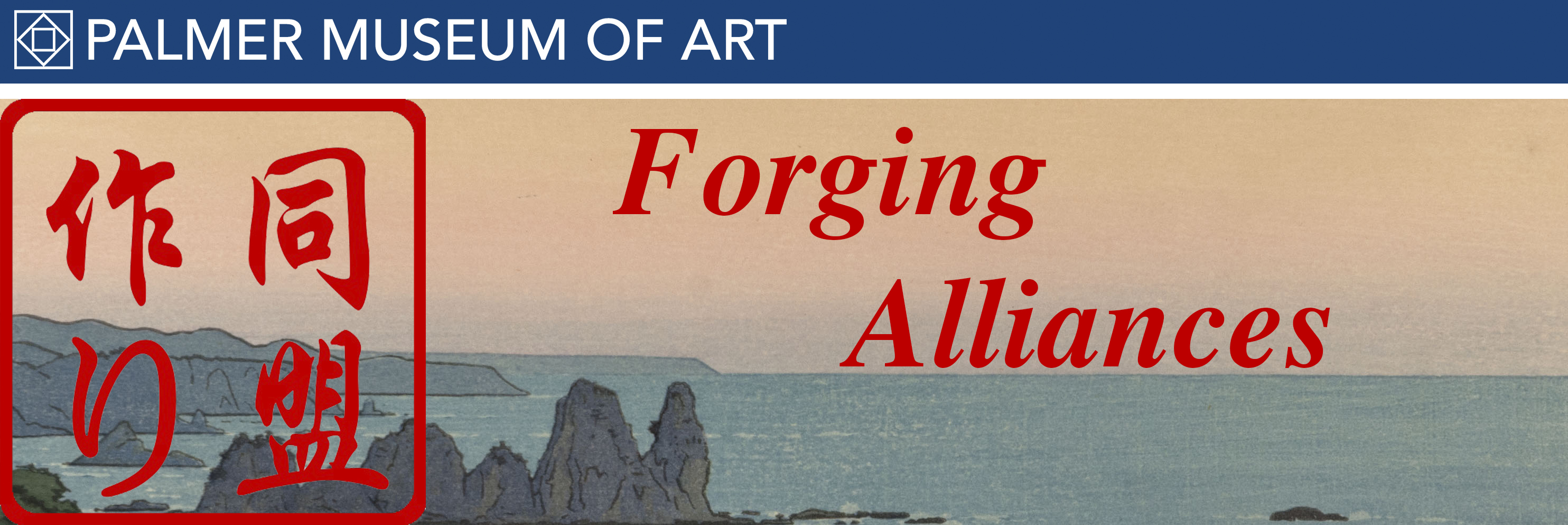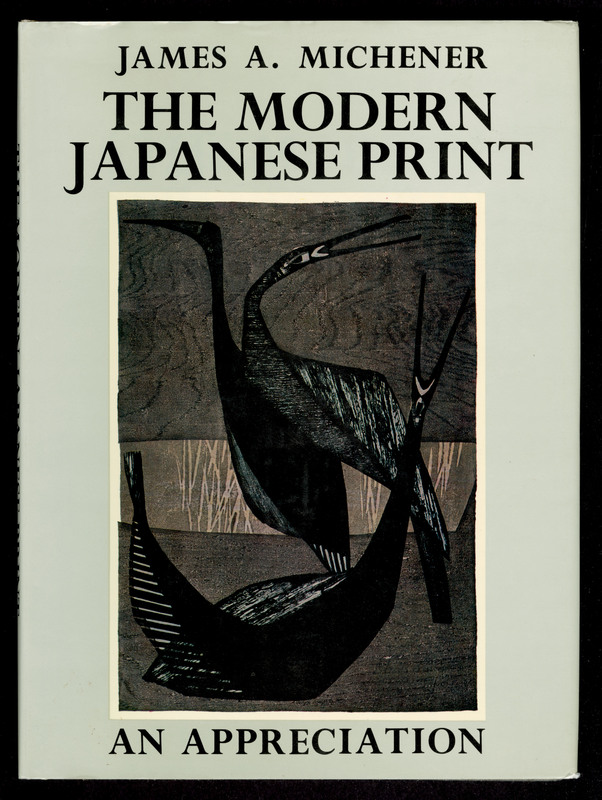The Modern Japanese Print: An Appreciation
Item
Title
The Modern Japanese Print: An Appreciation
Creator
James A. Michener
American, 1907–1997
American, 1907–1997
Date
1968
Description
Published by Charles E. Tuttle Company, Tokyo and Rutland, Vermont.
Raised in Doylestown, Pennsylvania, James Michener was a high school English teacher who had just begun to work in scholastic publishing when, in 1943, he was called to active duty in the Navy during World War II. His experiences formed the background for a book, Tales of the South Pacific, which won a Pulitzer Prize and was adapted, under the title South Pacific, as a highly successful Broadway musical and Hollywood movie. Michener went on to write scores of best-selling novels, including the 1954 Sayonara, which became an Oscar-winning movie in 1957. In the novel, an American pilot falls in love with a Japanese actress, whose beauty he comes fully to appreciate through his study of ukiyo-e woodblocks prints.
Devoted to educating Americans about Asia, Michener produced two non-fiction books about Japanese prints and the culture that gave rise to them. His 1954 The Floating World offers a history of ukiyo-e. He followed this in 1959 with a picture book, Japanese Prints from the Early Masters to the Modern. Michener’s interest, affluence, and influence made him a powerful promoter of the Japanese Creative Prints movement. Ultimately, he donated over 8000 prints from this movement to the Honolulu Academy of Arts.
In 1962, Michener worked with publisher Charles Tuttle to a produce a “deluxe” book comprising ten prints, one by each of the Creative Prints artists he admired most, along with his own commentary. Michener and all of the artists signed each of the 510 numbered copies. On display here is the 1968 "popularly priced edition" of the book, which reproduces the 1962 text at half size in order to offer “a far wider audience the techniques and craftsmanship of this group of distinguished artists, along with Mr. Michener’s perceptive, informative commentary,” as the forward puts it.
Michener’s commentaries stress comparisons between the Japanese artists and European modernists, and advocate forcefully for Japan’s place in the modern art world. Writing about the work of Sadao Watanabe (displayed in the exhibition), Michener chastised those who would restrict Japanese artists to Japanese styles and subjects:
"I think it illogical to expect the artists of any one nation to live permanently outside the grand tradition of their age. If American artists like Jackson Pollock and William de Kooning and German artists like Franz Marc and Mac Beckmann are free to work through the international tradition until they find their own strong style, then surely the Japanese must be accorded the same courtesy."
Michener’s choice of American and German comparisons registers the post-war context of his promotion of modern Japanese prints.
Raised in Doylestown, Pennsylvania, James Michener was a high school English teacher who had just begun to work in scholastic publishing when, in 1943, he was called to active duty in the Navy during World War II. His experiences formed the background for a book, Tales of the South Pacific, which won a Pulitzer Prize and was adapted, under the title South Pacific, as a highly successful Broadway musical and Hollywood movie. Michener went on to write scores of best-selling novels, including the 1954 Sayonara, which became an Oscar-winning movie in 1957. In the novel, an American pilot falls in love with a Japanese actress, whose beauty he comes fully to appreciate through his study of ukiyo-e woodblocks prints.
Devoted to educating Americans about Asia, Michener produced two non-fiction books about Japanese prints and the culture that gave rise to them. His 1954 The Floating World offers a history of ukiyo-e. He followed this in 1959 with a picture book, Japanese Prints from the Early Masters to the Modern. Michener’s interest, affluence, and influence made him a powerful promoter of the Japanese Creative Prints movement. Ultimately, he donated over 8000 prints from this movement to the Honolulu Academy of Arts.
In 1962, Michener worked with publisher Charles Tuttle to a produce a “deluxe” book comprising ten prints, one by each of the Creative Prints artists he admired most, along with his own commentary. Michener and all of the artists signed each of the 510 numbered copies. On display here is the 1968 "popularly priced edition" of the book, which reproduces the 1962 text at half size in order to offer “a far wider audience the techniques and craftsmanship of this group of distinguished artists, along with Mr. Michener’s perceptive, informative commentary,” as the forward puts it.
Michener’s commentaries stress comparisons between the Japanese artists and European modernists, and advocate forcefully for Japan’s place in the modern art world. Writing about the work of Sadao Watanabe (displayed in the exhibition), Michener chastised those who would restrict Japanese artists to Japanese styles and subjects:
"I think it illogical to expect the artists of any one nation to live permanently outside the grand tradition of their age. If American artists like Jackson Pollock and William de Kooning and German artists like Franz Marc and Mac Beckmann are free to work through the international tradition until they find their own strong style, then surely the Japanese must be accorded the same courtesy."
Michener’s choice of American and German comparisons registers the post-war context of his promotion of modern Japanese prints.
Source
The Pennsylvania State University Libraries
Rights
This image is posted publicly for non-profit educational uses, excluding printed publication. Other uses are not permitted.

